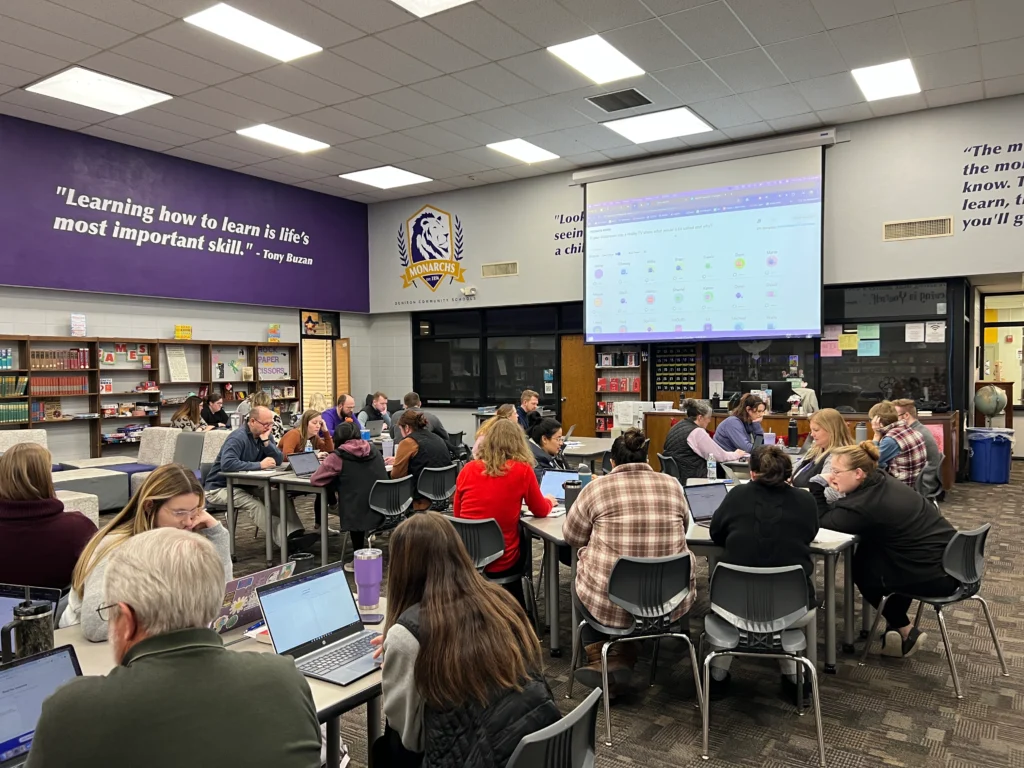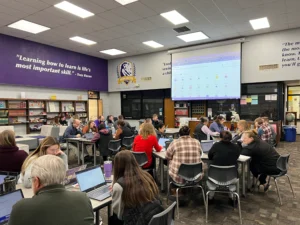Introduction
Building on the momentum of its first full year in classrooms, Short Answer continued to grow in reach and deepen its impact in the 2024–2025 school year. This case study seeks to understand how educators experienced the platform in its second full school year. Using a mixed-methods approach, including interviews, in-app NPS surveys, and an end-of-year educator experience survey, this report explores both the learning outcomes enabled by Short Answer and the challenges teachers encountered along the way.
Findings show that educators view Short Answer as a valuable tool for developing student writing, increasing engagement, and promoting feedback-rich learning environments. At the same time, ongoing issues around usability, classroom time constraints, and grading integration remain important opportunities for growth. This study closes with recommendations for strengthening the product’s classroom alignment and research base in future cycles.
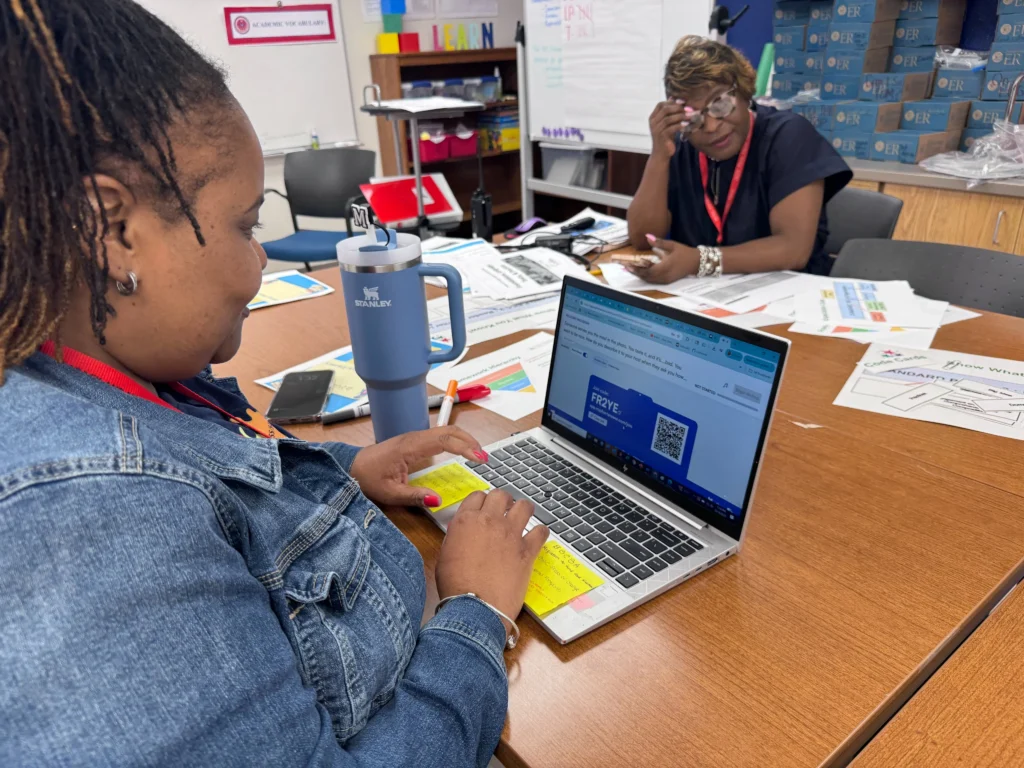
Methodology
This study draws from three sources: educator interviews, in-app net promoter score (NPS) surveys, and an end-of-year educator experience survey. We used a mixed-methods approach to more holistically understand how Short Answer was used in classrooms during the 2024–2025 school year and to identify both strengths and areas for continued improvement. This approach allowed us to triangulate findings across qualitative and quantitative data sets, while also addressing the limitations inherent in any single source.
Interviews | 25 interviews were scheduled, and 13 video interviews were conducted between May and June 2025. Interviewees included teachers, instructional coaches, and school leaders. Teachers were recruited via the Short Answer mailing list. The majority of those interviewed were users on the Short Answer Free plan. The interviews focused on usage patterns, instructional impact, student engagement, and opportunities for platform growth.
NPS Surveys | Short Answer continued to embed a net promoter score (NPS) survey via the Qualtrics Delighted platform within the teacher dashboard. The survey was shown at random to all active users of Short Answer and prompted educators to rate how likely they were to recommend Short Answer to a colleague, along with an optional comment. NPS surveys were capped at 50 per month. By the end of the school year, Short Answer collected 548 new responses.
Educator Experience Survey | In May of 2025, Short Answer distributed an end-of-year survey to all Short Answer educators via email. The survey focused on measuring educator perceptions of student writing growth, peer feedback quality, and classroom integration. It also included questions on how Short Answer influenced teachers’ instructional practices and understanding of student learning. 77 educators completed the survey by June 2025. Responses came from a wide range of grade levels and content areas, and included both frequent users and those just beginning to integrate the tool into their instruction.
Findings
Interviews
Between May and June 2025, 13 semi-structured interviews were conducted with educators who had implemented Short Answer in a variety of contexts across Texas, Michigan, South Carolina, and Illinois. Participants included high school and middle school teachers, as well as instructional coaches, representing a range of subject areas including English Language Arts, World Languages, and Social Studies. Several interviewees were experienced users, while others were in their first semester of adoption.
The interviews explored how Short Answer shaped student writing, engagement, and classroom instruction. Educators consistently reported increased motivation and participation, especially among reluctant writers, driven by the peer feedback and competitive elements of the platform. One teacher shared, “I have never seen them get excited for writing. I have never had them ask to write. So that was extremely powerful.”
Teachers highlighted the shift from teacher-directed instruction to more peer- and feedback-driven learning. “They’re revising because it comes from someone else…not just me telling them,” one educator reflected. Several also pointed out how Short Answer helped teachers themselves give clearer, more actionable feedback: “Teachers often say, ‘It doesn’t sound right, but I don’t know what to tell them.’ This tool gives them something concrete.”
Educators also identified meaningful use cases beyond English classrooms, including Spanish, advisory periods, and writing prompts tied to science and social studies content. A Spanish teacher explained, “I think having Short Answer, and knowing there’s a bit of competition, fueled that want to produce a better output.” Another instructional coach noted that teachers were able to have better conversations about student ability, “We can kind of track a student who started the year at a ninth-grade activity and is now writing more like 11th 12th grade level”.
While educators consistently found Short Answer to be engaging and impactful, several identified opportunities to strengthen the platform.
Teachers expressed interest in enhancing the peer review experience by allowing students to write short comments when casting votes. This would support deeper engagement and give writers more actionable insights. As one educator put it, “Maybe they could write something like, ‘he used really good vocab,’ or ‘you could have included this information.’ That would make it more of an interactive response.” This functionality is available as a Short Answer Premium feature, but teachers either weren’t aware of or didn’t have access to Premium functionality.
Several educators wished for the option to upload their own writing samples for comparison, such as a mid-level versus a strong paragraph, rather than relying solely on student-generated content. One teacher explained, “I have to hope that I get a good one from the kids. I’d like the option to upload something I know models what I’m teaching.”
These suggestions reflect a desire to deepen the feedback culture, provide clearer instructional scaffolding, and support more intentional writing growth.
NPS Survey Data
From August to June 2025, across 548 responses, Short Answer maintained an average net promoter score of 85 (see image below for monthly averages). When asked “How likely are you to recommend a Short Answer to a friend”, a score of 9 or 10 qualified as a promoter (represented in green below). A score of 7-8 qualified as passive, or someone who was finding some value (represented in grey below). A score of 6 and below qualified as detractors who were not finding value in Short Answer (represented in red below).
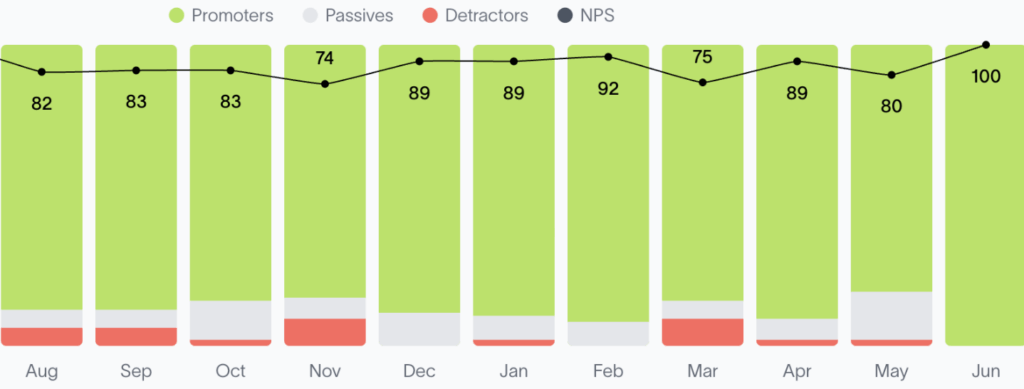
Of the 548 responses, 165 (30%) chose to leave comments about their experience with Short Answer. Among these, 139 expressed positive sentiment, with many highlighting improved student writing, high engagement, and the value of peer review. Teachers consistently noted that students enjoyed the activities and often requested to use the platform. Engagement remained a dominant theme, supported by comments describing classrooms where students were “actively engaged” and motivated to revise based on peer feedback. Educators also appreciated the sense of community Short Answer fosters, as well as its role in supporting writing instruction in both in-person and online settings. The tool was frequently praised for its ease of use, with several users describing it as “easy to use” and “ready to implement immediately.”
18 users, while generally satisfied, expressed passive or mixed feelings. A number of these comments pointed to areas where improvements could enhance the experience. Common concerns included students having downtime while waiting for others to finish, limited activity formats, and challenges with peer feedback accuracy. Cost was also cited as a barrier, especially for individual teachers without school support. Several educators also expressed a desire for greater flexibility and customization, particularly in rubric design and activity types. Despite these limitations, many still used the platform regularly, citing strong student engagement as a reason to continue.
8 users reported negative experiences, mostly tied to technical issues and platform usability. These included students being disconnected during activities and unable to rejoin, as well as frustrations with the user interface. Concerns were also raised about changes to the Basic/Free Plan, which some educators felt reduced access for schools with limited budgets.
See the appendix below for all NPS survey comments
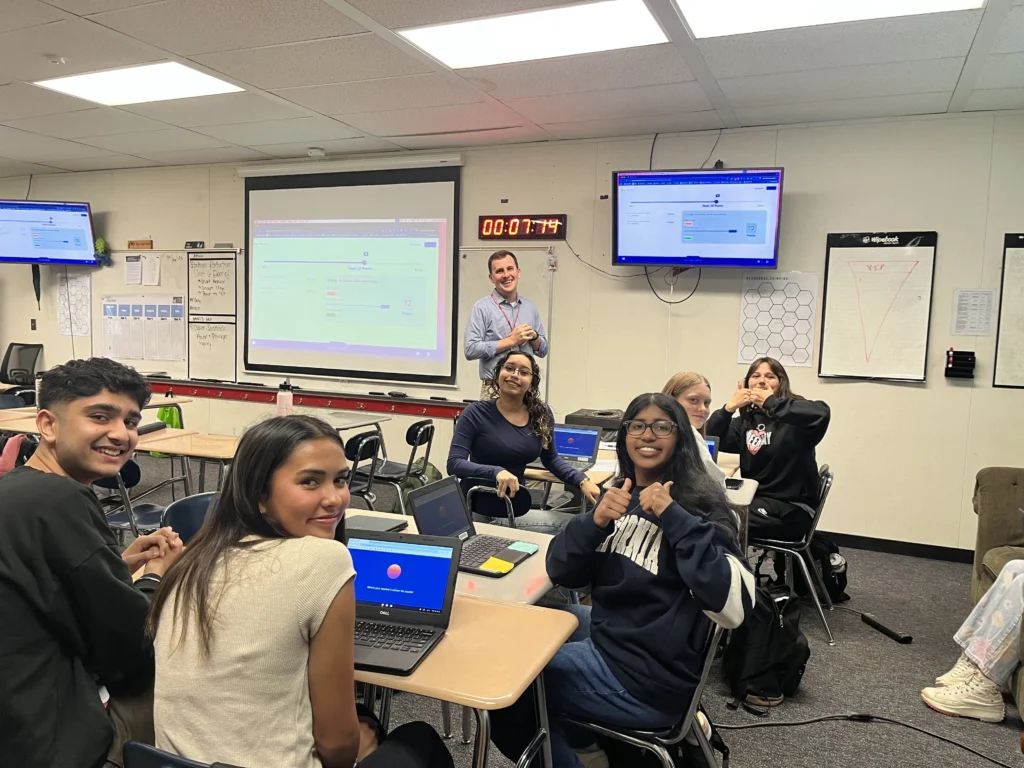
Teacher Experience Survey
Results from our educator experience survey (n=77) spanned the full K–12 spectrum. Based on grade levels taught, educators were grouped into one of three categories:
- High school (Grades 9–12): 66%
- Middle school (Grades 6–8): 44%
- Elementary (PreK–5th): 27%
(Note: Some teachers reported teaching across multiple grade bands, so categories may overlap.)
These educators mostly taught:
- English / Language Arts: 53.2%
- Social Studies / History: 27.3%
- Science: 11.7%
Other subject areas represented included World Languages, Mathematics, Journalism, Computer Science, Psychology, and STEAM.
Teachers primarily taught in Texas (31%) and Michigan (10.3%), with 14 U.S. states and 2 international locales represented in total.
Educators used Short Answer at a range of frequencies. The majority (67%) reported using the platform at least once or twice a month, with 41% using it monthly and 26% biweekly. Nearly one in five (19%) used it weekly or more. A smaller portion of respondents (14%) signed up but reported minimal or no use during the year, often citing timing or curriculum alignment as barriers.
Additionally, teachers observed increased engagement from students, including reluctant writers showing more interest. One teacher shared, “I started using Short Answer in the last quarter of the school year. I did see my more reluctant writers show more interest in that time.” Another educator stated, “My students have never actually WANTED to write until I started using this platform. After the first couple of times using Battle Royale, the kids started asking for it.”
In addition to the overwhelmingly positive feedback, educators identified some challenges and areas for improvement. Using Short Answer in larger classes often results in longer session times, hindering efficiency. One teacher shared, “I don’t feel that I was able to use Short Answer as much as I would have liked due to time constraints and district curriculum pacing guides. The times I did use it, though, yielded very positive results in both myself and my students.” Some teachers suggested incorporating features that enable students to award success criteria to multiple answers during the comparative judgment process and enhancing numerical grading integration with Google Classroom. Specific suggestions for improvement included adding more writing support, enabling post-AI and peer feedback revision, and tailoring activities to various student levels. One educator expressed the need for revision features, suggesting, “Please let students edit after being given AI feedback or let them revise in general after getting peer feedback as well.”
Because of this feedback, the Short Answer team will be adding this functionality to Short Answer during the ’25-’26 school year.
Overall, the survye showed a strong enthusiasm for expanding the use of Short Answer, with plans to incorporate it into various subjects and present it to colleagues. Despite some limitations, Short Answer is valued for promoting student writing growth and engagement, and educators are optimistic about its potential in future academic years.
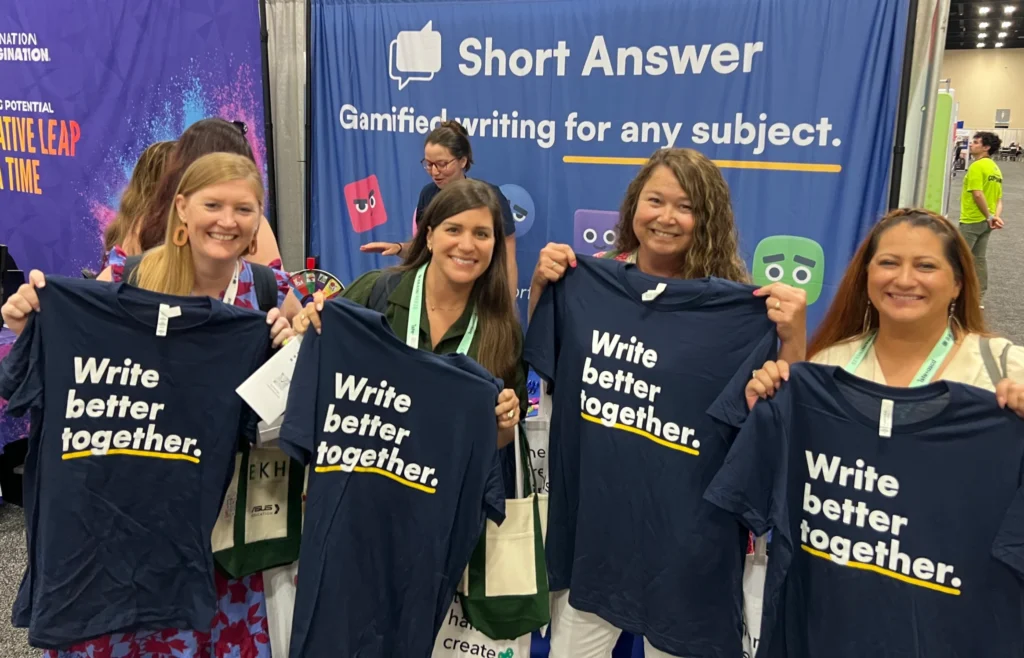
Discussion
Findings from this study suggest that Short Answer is an effective tool for improving student engagement and writing instruction. Across interviews and survey data, educators reported increased motivation and participation, particularly among reluctant writers. The platform’s competitive and peer-driven formats fostered a feedback-rich environment and encouraged active revision, aligning with research on the value of peer feedback in writing development.
Teachers also highlighted shifts in instructional practice, moving toward more collaborative learning. Short Answer helped scaffold both teacher and peer feedback, providing clearer and more actionable guidance. Importantly, the platform demonstrated versatility across subject areas, extending its utility beyond English Language Arts.
Nonetheless, areas for improvement remain. More clear communication of platform functionality is needed, as educators didn’t realize that comment-enabled voting was available. Additionally, teachers desired the ability to upload model writing samples. Challenges related to time management, grading integration, and revision support were also noted, particularly in larger classrooms.
Limitations
Several limitations in this case study must be acknowledged. Survey respondents were self-selecting. The absence of student voices is another key limitation; future research should incorporate student perspectives to more comprehensively assess impact. Additionally, many educators only began using Short Answer later in the academic year, limiting conclusions about sustained instructional outcomes.
Conclusion
Despite these limitations, the data suggest that Short Answer is a promising tool for enhancing writing instruction and fostering student engagement. The platform has shown potential to support meaningful instructional shifts by broadening the use of peer feedback and writing instruction across diverse classroom contexts. Moving forward, addressing the identified challenges and conducting more rigorous, student-inclusive efficacy research will be essential. Short Answer is well-positioned to continue evolving as a valuable resource for educators and learners alike, as it continues on its path to help students write better.
Note: Short Answer would like to thank Shi Han Ang, a master’s student at the Stanford Graduate School of Education, for creating this case study.

